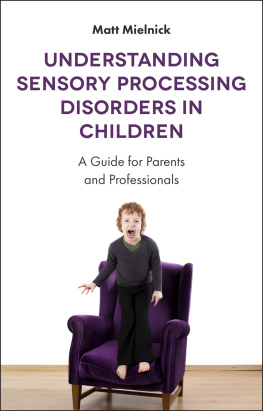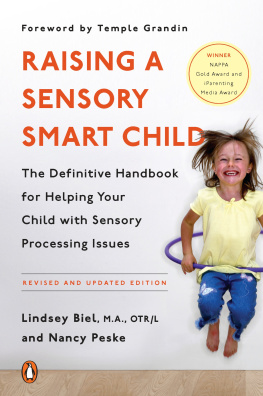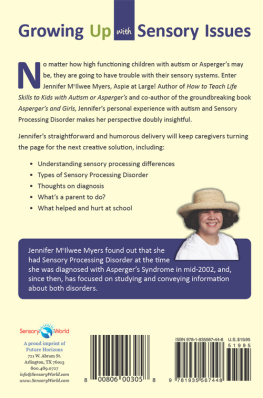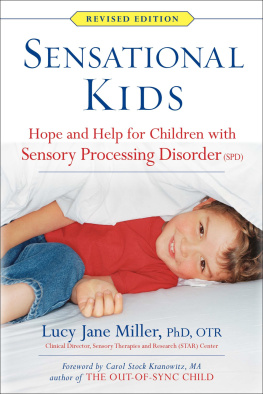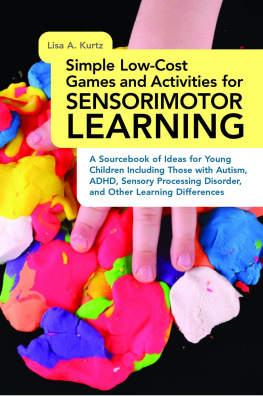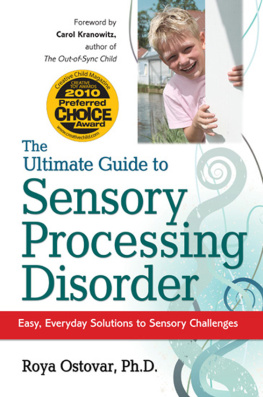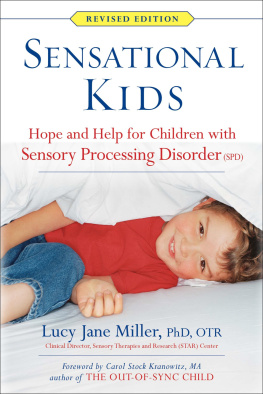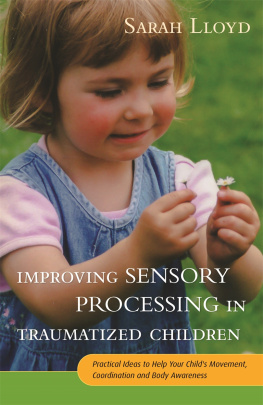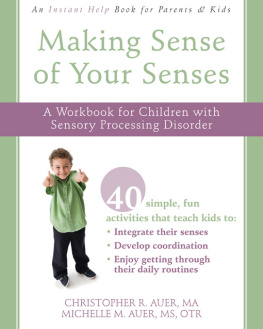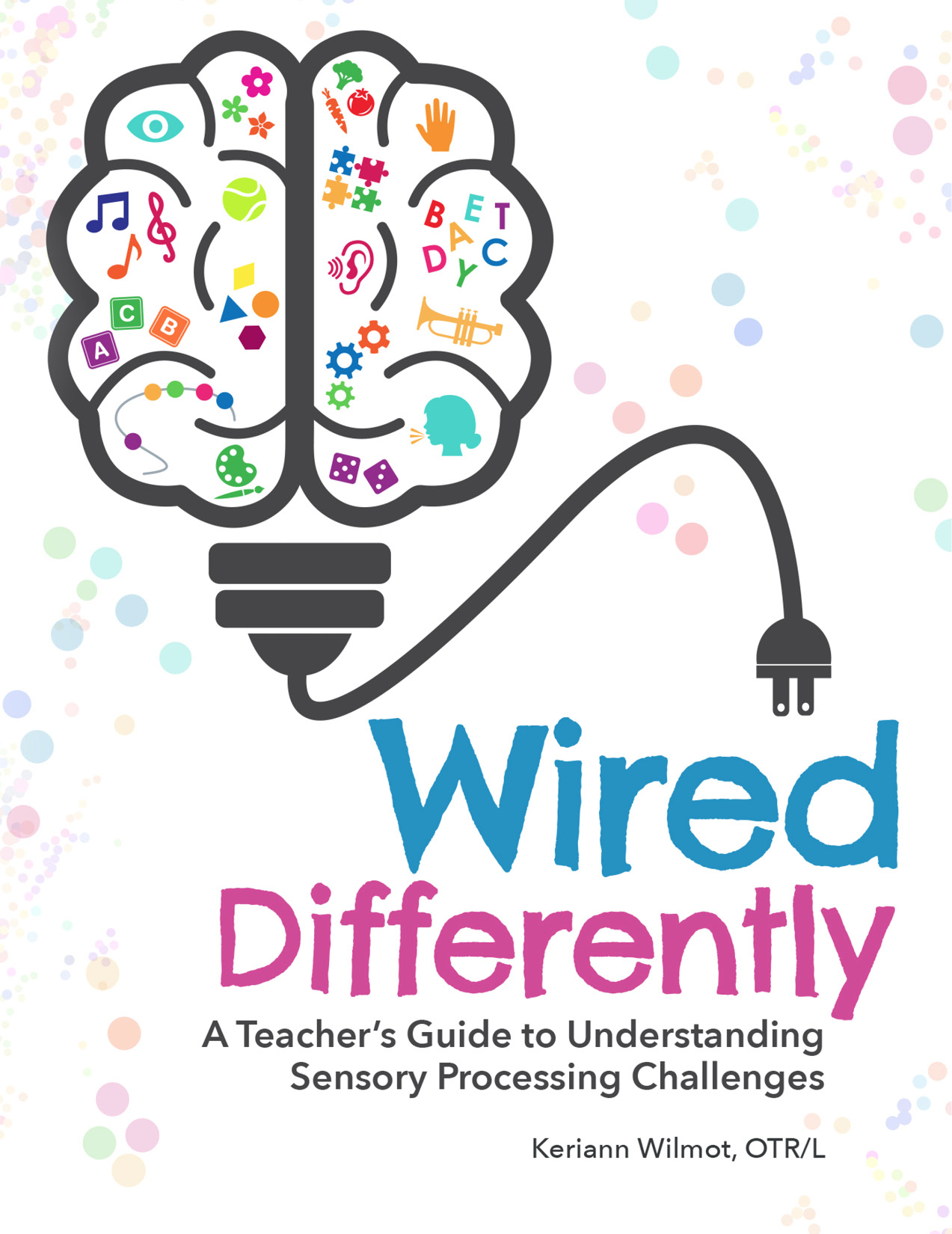Contents
Chapter 1
Sensory Processing Disorder
Chapter 2
Sensory Processing Disorder in the Early Childhood Classroom
Chapter 3
Setting Up a Sensory-Friendly Classroom
Chapter 4
Practical Tools to Meet the Needs of All Children in the Classroom
Chatper 5
Technology Tools to Help Children with SPD
Chapter 6
Accommodations for Specific Sensory Processing Issues
Copyright
2020 Keriann Wilmot
Published by Gryphon House, Inc.
P. O. Box 10, Lewisville, NC 27023
800.638.0928; 877.638.7576 [fax]
Visit us on the web at www.gryphonhouse.com.
All rights reserved. No part of this publication may be reproduced or transmitted in any form or by any means, electronic or technical, including photocopy, recording, or any information storage or retrieval system, without prior written permission of the publisher. Printed in the United States. Every effort has been made to locate copyright and permission information.
Images used under license from Shutterstock, except where noted.
Library of Congress Control Number: 2020933513
Bulk Purchase
Gryphon House books are available for special premiums and sales promotions as well as for fund-raising use. Special editions or book excerpts also can be created to specifications. For details, call 800.638.0928.
Disclaimer
Gryphon House, Inc., cannot be held responsible for damage, mishap, or injury incurred during the use of or because of activities in this book. Appropriate and reasonable caution and adult supervision of children involved in activities and corresponding to the age and capability of each child involved are recommended at all times. Do not leave children unattended at any time. Observe safety and caution at all times.
Introduction
Being an early childhood educator to children ages three to five is one of the most fun and exciting jobs I can imagine. Children this age are just adorable little sponges soaking up all the information the world can offer as they expand their knowledge and language, while they play and engage in the types of fun-filled activities that adults envy!
Preschoolers love to play with vehicles and dollhouses, and they are also learning to color while holding a crayon, engaging in painting and crafting activities, talking about the weather, learning to go to the bathroom by themselves, and learning how to dress themselves for outdoor playtime. At this age, they learn about colors, shapes, letters, and numbers as they are receiving their first introduction to academics and education.
Starting the school year can be a challenge for any teacher, but especially for early childhood teachers. Children at this age are curious, excited, and learning the classroom routines. For most children, learning the rules of preschool takes time and practice, but with repetition and structure they do; every day is a little easier. Confidence blooms as children develop new skills. But what about those children who struggle in preschool?
Ava, Zion, and Min-jun
Lets meet three early childhood students in three different early childhood environments.
Ava
Ava is a four-year-old girl in a private child-care setting where she participates in a structured preschool opportunity in the morning. Avas beautiful long hair, which she will not let anyone cut or put into a ponytail, is a straggly mess. It frequently covers her eyes and interferes with her play as she struggles to see through it. She likes organized and structured play activities that involve color sorting. However, she always wants to play according to her own agenda and does not like to follow the teachers rules. Ava orders other children around when playing. She may scream when she is mad if they dont participate her way. Transitions to activities she does not like, such as classroom art projects or circle time, can lead to yelling, crying, and tantrums or running away to another part of the classroom. Children and teachers who try to engage with her in an effort to help her may be met with lashing out through hitting, kicking, pushing, and yelling. Ava refuses to sit on the carpet with her peers at circle time and is often found playing with a toy on her own at the back of the room. Redirecting her to the circle-time carpet square leads to her flopping on the floor and more outbursts. Ava frequently refuses to put on coats or other clothing with fasteners prior to outdoor time. She dislikes using the restroom at school because she is terrified of the automatic toilet flusher; consequently, she is often constipated. She has a limited diet of foods she likes to eat. She does not use utensils properly, shoving food into her mouth and taking bites that are too large. Rest time has become a significant challenge, as she is not able to settle down on her mat to fall asleep; her wakefulness leads to disruptive and inappropriate behaviors as she tries to leave her mat and play with toys in the room. Ava has not been successful with building friendships and relationships in the classroom. She is often dressed in the same cotton, loose-fitting clothing, and she prefers wearing old sneakers or winter boots, even when they are too small or out of season.
While Ava is able to speak and communicate, she struggles to use her language effectively to share her frustrations. Instead, in an attempt to get her needs met, she resorts to physical actions such as hitting or yelling. Ava is not responsive to her teachers attempts to help her, and other students are beginning to copy her behavior. The director has met with her parents multiple times about her disruptive and unsafe behavior and is considering asking her parents to find another program.
Zion
Zion is an energetic four-year-old boy in a private, half-day, morning preschool program at his community church. At circle time he is unable to remain on his carpet square, lying on the carpet, frequently changing his position, and bumping into other students who complain that he is in their personal space and that he is hurting them. When sitting in a chair at the table, Zion rocks back and forth in it unsafely and prefers to stand at the table to complete his work. When playing with toys, he bangs them together forcefully, often breaking his creations or those of his peers. When building with toys, he struggles to use the right force to attach pieces correctly and is often frustrated. During computer time, Zion refuses to wear headphones. In the classroom environment, he covers his ears and complains that the noises are too loud. He speaks so quickly at times it can be hard to understand what he is saying. Zion brings the exact same lunch every day and is very particular about what he eats and how he eats it. Yet, for some reason, he puts all sorts of toys in his mouth and frequently bites and chews on his clothing and other classroom items. Playdough and sand-and-water play are his favorite classroom activities, but he avoids sticky or messy painting. He frequently complains that his hands are dirty and requests wipes to clean them off. Zions parents tell his teacher each morning how difficult it is for him to fall asleep at bedtime and that he was up several times during the night. Other teachers have wondered whether Zion could have an attention disorder that is affecting his ability to learn new skills, because hes constantly on the go and has difficulty remembering any of his letters or numbers.
Min-jun
Min-jun is a sweet but very quiet and shy little boy. Each day he struggles to say goodbye to his parents and transition into the preschool classroom routine. However, he eventually settles in and takes his spot on the carpet for circle time. He remains seated in the correct spot but often can be seen chewing on his shirt during circle time. As his teacher reads stories aloud, he does not appear to be following along. He needs a little bit more time to process a question before he answers, but he is able to effectively remember details of the stories. While Min-jun occasionally needs some reminders and cueing, he participates in classroom routines appropriately. His parents have shared that he is struggling at home with a lot of behaviors. Getting to school in the morning is a huge stress for the family and a daily hurdle for Min-jun, as he takes a long time to wake up and get moving in the morning and then does not want to wear certain clothing items. His refusal can lead to intense meltdowns before leaving for school. When he arrives home at the end of the day, he can also be challenging and has frequent tantrums. His parents wonder if he is exhibiting the same behaviors at school. They are worried about his ability to learn and participate with his peers, but for the most part, he is succeeding at school without any major issues.


